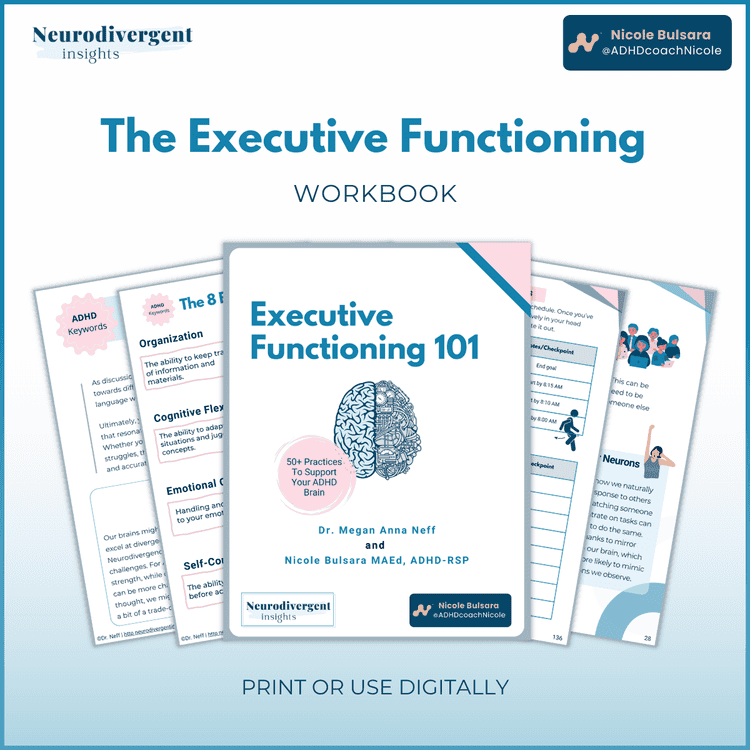
Neurodivergent Anxiety
Disclaimer: Some of the links in this article are affiliate links, meaning: at no additional cost to you, I earn a small commission if you click through and make a purchase.
Today, I’m talking about all things ADHD and Autism anxiety. First of all, anxiety is a normal part of being human, and everyone experiences anxiety. Anxiety is energizing and can be protective. Anxiety helps us get that paper written or finalize the last details on a project. Without anxiety, humanity would not have survived, so some level of anxiety is helpful. We all tend to have a different “baseline anxiety” (and neurodivergent people often have a sightlier higher baseline of anxiety). Anxiety can be helpful; however, when it becomes unanchored and runs rampant, it can begin to cause havoc. At this point, anxiety flips from being helpful to troublesome. When it becomes pervasive and makes it difficult to pay attention to other parts of our life people begin to experience suffering associated with their anxiety. At this point, it is helpful to seek out supports and treatment to address the anxiety.
For the neurodivergent person, we have a double vulnerability to anxiety. For one, life is generally more challenging for us. Whether it is navigating neurotypical social-communication patterns, sensory overload, or executive functioning challenges, we have more day-to-day stressors which contribute to worry and anxiety. We often find ourselves needing to work harder to accomplish less. With that equation, who wouldn’t worry/stress/anxiety? This form of anxiety is what I am referring to as “neurodivergent anxiety”, in that it is secondary anxiety that results from the difficulties we experience as we work to navigate a neurotypical world.
The second vulnerability is that we are genetically predisposed to experience more primary anxiety disorders (generalized anxiety, panic attacks, social phobia, OCD, and more). So, a person may have a primary anxiety disorder and Autism or ADHD, and secondary neurodivergent anxiety. Phew, that’s a lot. Naturally, many of us benefit from some additional supports in this area.
Anxiety is a full-body emotion, and it is physiological (bodily), mental, social, and emotional. Below is a run-down of some of the common symptoms of anxiety and different strategies that can provide relief and support.
Physical Anxiety
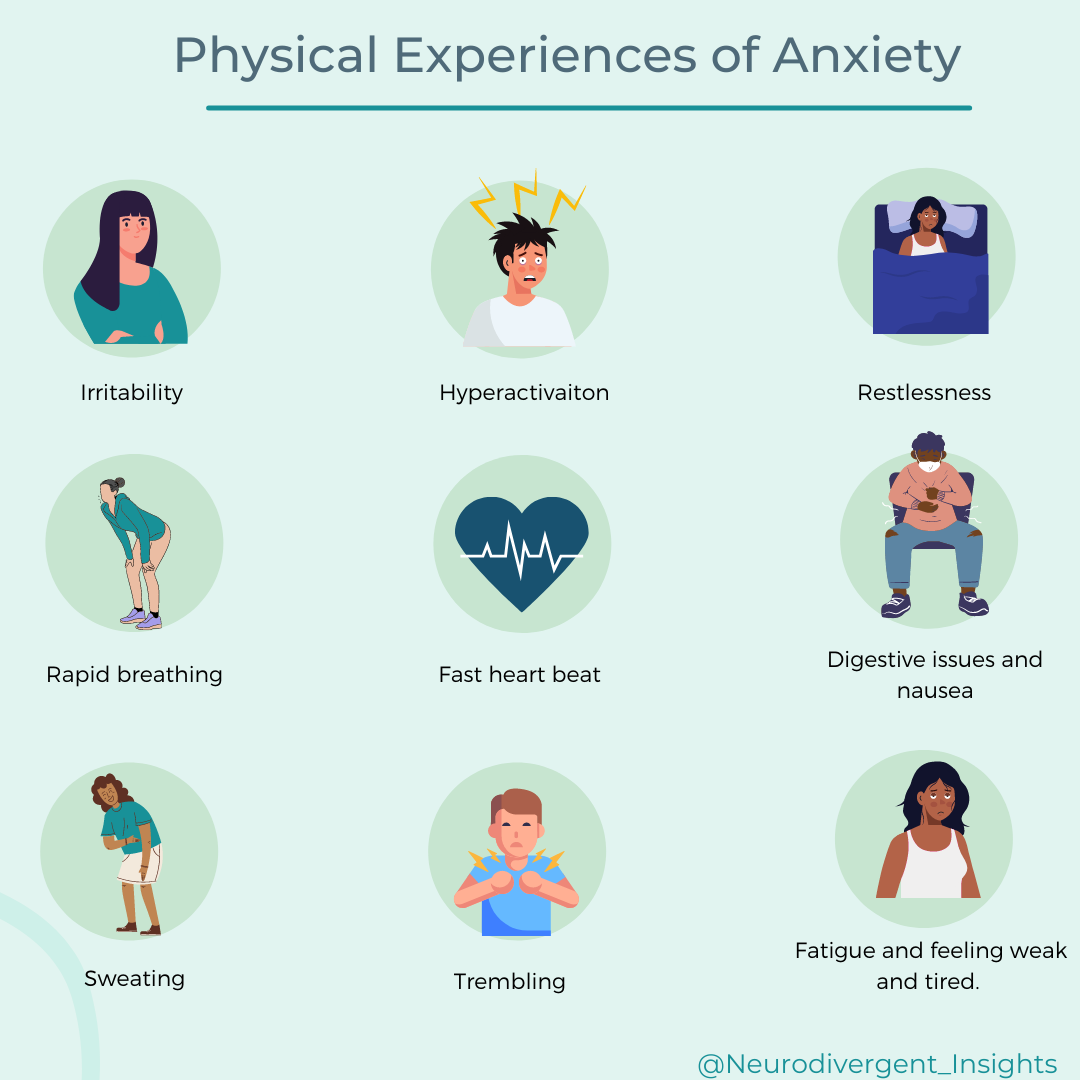
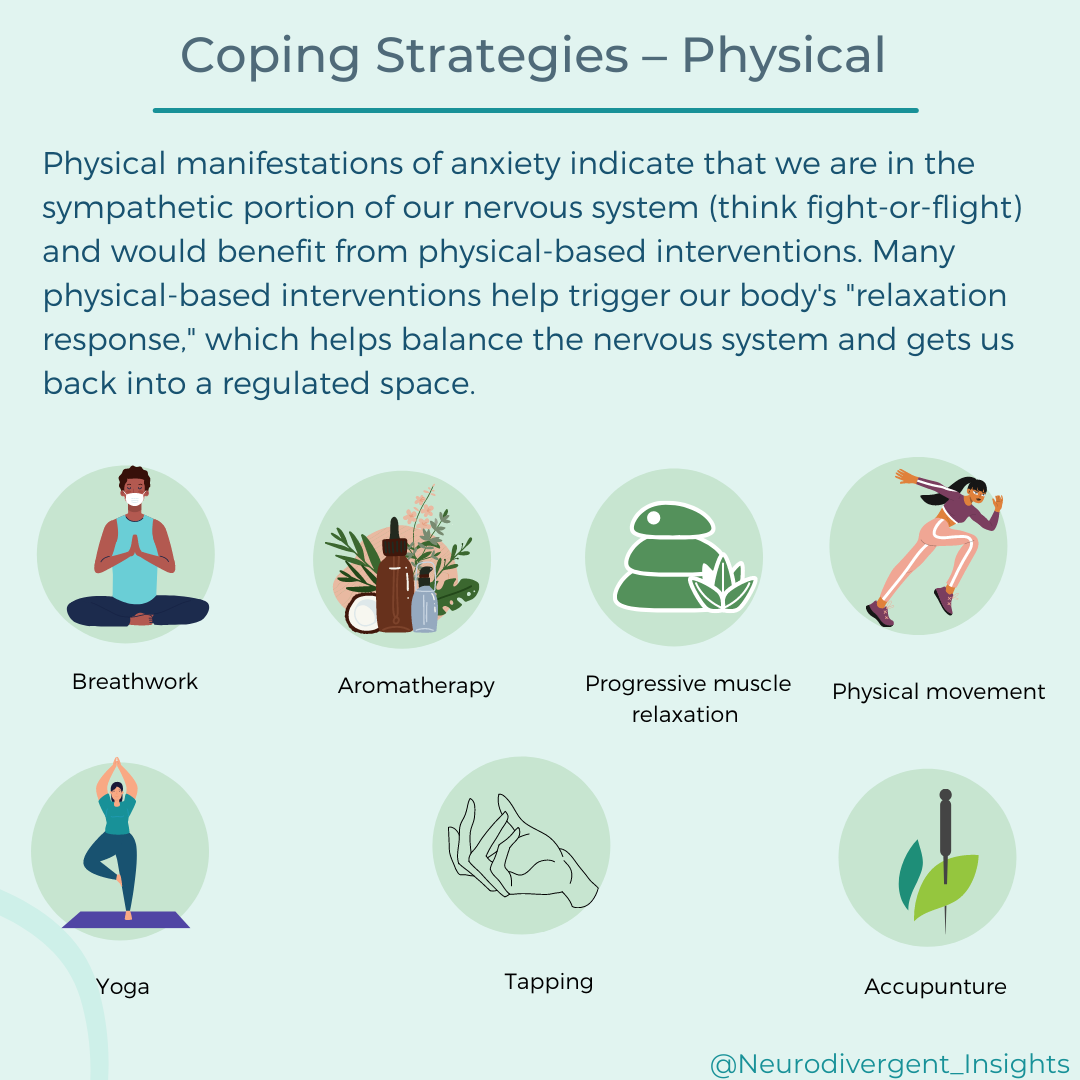
The body’s natural response to anxiety and stress is to go into the sympathetic nervous system mode. Neurodivergent people are also more vulnerable toward being sympathetic dominant (meaning many of us spend more time in the part of our nervous system that amps us up). Physiological anxiety can also be a side effect of some medications (for example, stimulants activate the central nervous system, so people may experience more physiological anxiety). For physiological anxiety, we need physiological interventions that help us to get back into a regulated zone. Below are some strategies that help balance our nervous system and help us get out of fight-or-flight mode.
Relaxation exercises are the bedrock for learning how to activate our “relaxation response” (parasympathetic nervous system). When we are sensory overloaded, panicked, irritable, or just stressed, our sympathetic nervous system can start to get overloaded, and using some relaxation responses can help bring balance.
Breathwork: Breathwork is one of the fastest ways to activate the relaxation response. Deep, diaphragmatic breathing signals to the body that you are safe and thus triggers the “relaxation response” (to learn more about the research behind polyvagal theory and breathwork, see this post). There are lots of different forms of breathwork. For example, Healthline put together 8 different breath exercises for anxiety. For a simple breathing exercise, try the one below:
Simple Breathing Strategy:
Take a deep breath in through your nose to the count of 4
Hold it for 1-2 seconds
Slowly let your breath out through your mouth to the count of 6
For an audio recording and guided medications, see Darmouth’s free Deep Breathing & Guided Relaxation recording.
Progressive Muscle Relaxation: This is a great one for when you are struggling with insomnia. It will help your body get into a deeply relaxed state. Start with your feet and intentionally create tension in your feet. Hold the tension for 5 seconds, then release. Repeat one more time than move to the next muscle group (calves, thighs, stomach, chest, arms, shoulders/neck face, and then the whole body). For a step-by-step guide, see this post from VeryWell. Or alternatively, you can listen to a voice recording that will walk you through the exercise (I recommend this for the first few times you do this). Such as Darmouth’s Progressive Muscle Relaxation recording.
Aromatherapy: Emerging research has demonstrated the benefit of aromatherapy for activating relaxation and calm within the body. Lemon, Lavender, among others, have been shown to induce calm.
Guided Meditation: Guided meditation can be another powerful way of activating the relaxation response. This is particularly helpful for those with a busy mind who may need to be doing more than a simple breathing exercise to keep the mind occupied, for guided meditations, see Darmouth’s collection and UCLA’s collected of free guided meditations.
Mental Anxiety
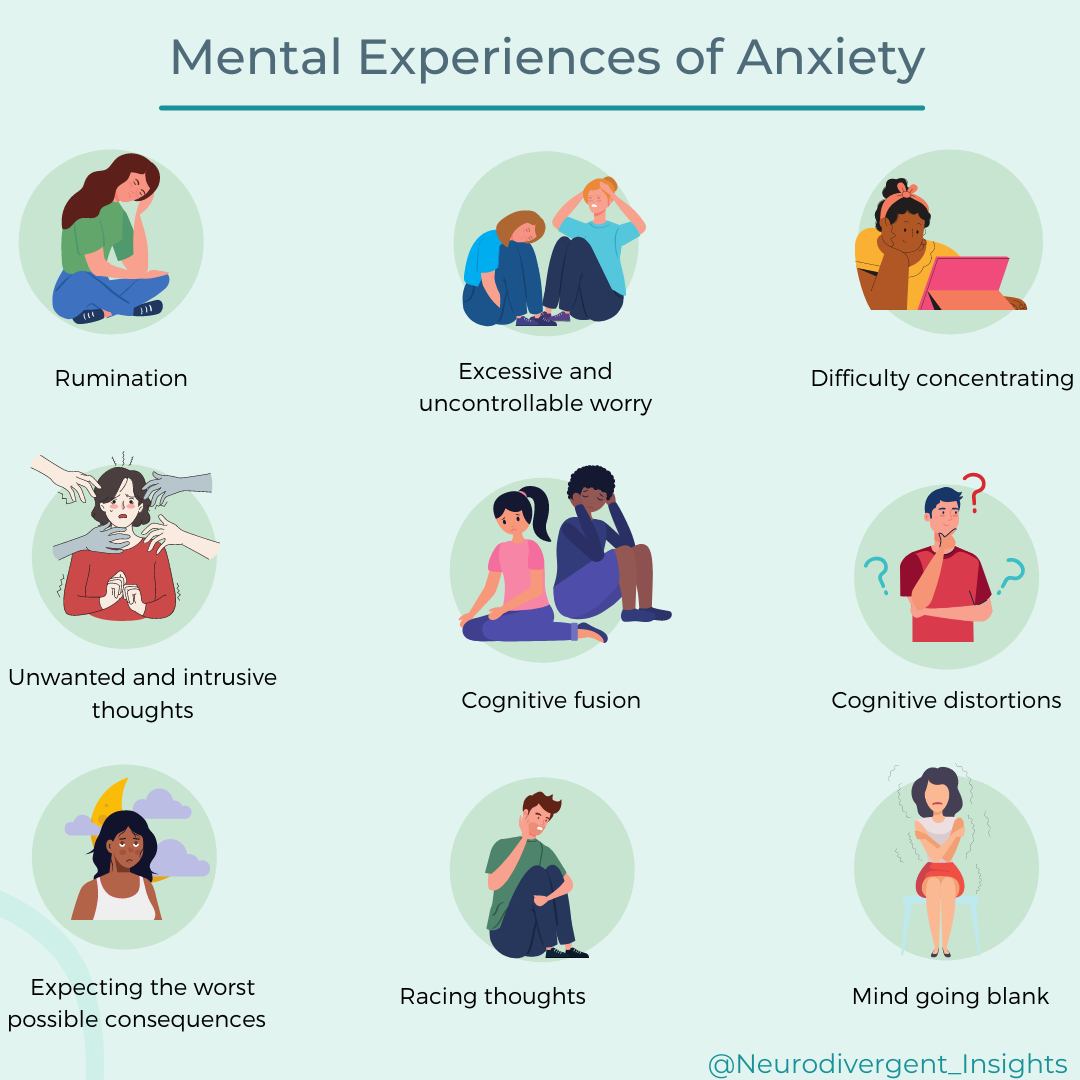
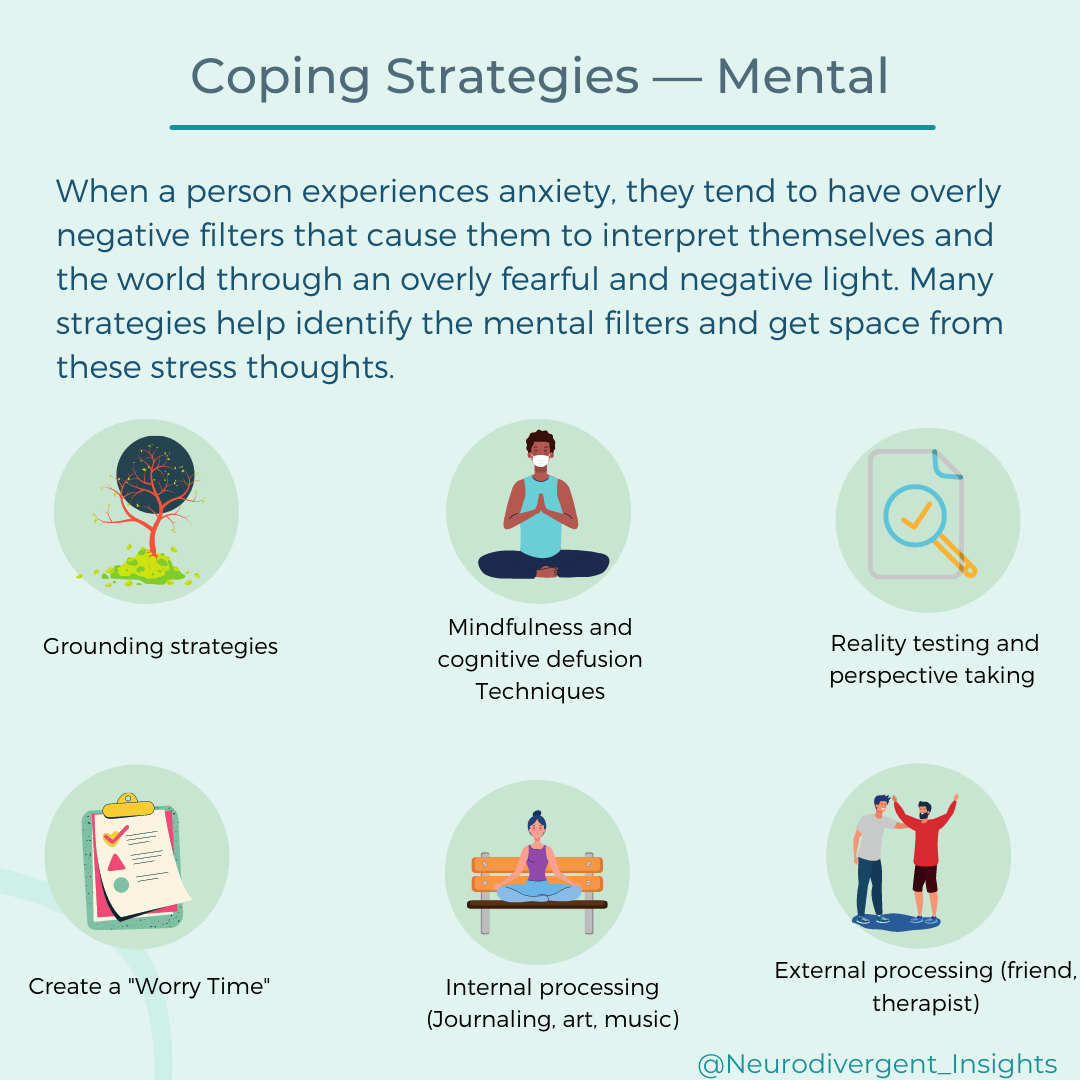
Worry and Rumination
Worry in and of itself is not bad. Worry is the energy that leads to creative problem-solving. Again, if our ancestors had never worried, they wouldn’t have problem-solved many of the challenges they experienced. I often tell my clients; the point isn’t to stop worrying. The goal is to worry well and efficiently. We also want to contain the worry, so it isn’t a constant thread going on in the back of our minds all day. One of my favorite techniques is to create a worry period. This is where you spend 15 to 20 minutes, and your job is to worry. During this period, it is helpful to write down what you are worried about. As you write them down, consider putting them in one of two buckets (identify what is within your control and outside your control). For worries within your control, you can then identify action steps you can take to help solve the problem. For worries outside of your control, you can acknowledge they are there and practice “releasing” the worry through using mindfulness, defusion strategies, or spiritual practices if you are spiritual. For a guide on setting up a worry period, see this helpful PDF.
Cognitive Distortions
We all have cognitive distortions. You can think of these as filters that your mind puts on. They are called distortions (or “thinking errors”) because these filters tend to distort reality. Here is a list of some of the most common ones. Cognitive distortions tend to keep us feeling inadequate. When anxiety is in the picture, many of these distortions exaggerate the negative and underestimate our ability to cope. While some therapies (CBT) focus on changing beliefs and thoughts, I find this is not always as helpful for the neurodivergent person (for some, it is, but for some, it can reinforce negative cycles). So, while it is not always helpful to try to change our thoughts, I do find increasing our awareness of the filters that we currently have can be quite helpful. Reviewing the list and identifying your mind’s favorite distortions can be a helpful way of increasing your awareness of the various “tricks” your mind plays on you. I also find that putting our thoughts through a reality filter is helpful for some people. However, when you are a person with multiple marginalized identities who experiences oppression, racism, and ableism, I find that the reality filter idea can be dismissive. Therefore, as a clinician, I use caution when using the “reality filter” for thoughts. For many people with marginalized identities, the world is unsafe, and people are critical of them. Trying to reality test out the belief can be dismissive and increase anxiety and stress. So, while I appreciate this technique, I use it with an abundance of caution.
Cognitive Fusion
“Cognitive fusion” refers to when we are blended with a thought, belief, or story that our mind is telling us. It’s akin to when you put on sunglasses with a specific shade (say blue or red sunglasses that turns everything you see blue or red), when you are fused with a belief you are seeing your whole world from that lens, and it is filtering your entire reality. You also are unable to see that this is simply a thought. It feels like reality. For example, perhaps a person misses a deadline, and they have the thought, “I am a failure.” When you are fused with this thought, you believe this is a reality. You are a failure, and your brain scans the environment (and your history), looking for evidence that this is true. When you defuse from a thought, you gain some space from the thought and recognize this is simply a thought (a painful one) that your mind is throwing at you. To unhook from the thought, you may say something like, “I am noticing I am having the thought I am a failure.” In doing this, you’re turning it from reality to a thought you happen to be happening in this moment. To learn more about cognitive fusion and different defusion strategies, see Dr. Gabriela Sadurní Rodríguez post (includes videos!).
Grounding
Grounding strategies involve detaching yourself from emotional pain by focusing on the outside world rather than what is going on inside you. It is helpful for extreme emotional pain and for managing panic symptoms. There are different kinds of grounding strategies, including mental, sensory, and soothing. See my grounding strategies free guide to learn more and for examples of different grounding techniques. Also, consider having fidget toys with you always, as you can easily use these for tactile grounding (to shop some of my favorites, go here).
Processing
There is a somewhat cheesy phrase within mental health, “name it to tame it.” This speaks to the idea that when things live outside of our minds, they tend to feel smaller and more containable. This is why doing a brain map/brain dump, journaling, speaking into a voice memo, or other ways of processing can help move through anxious feelings. For external processors speaking with a friend or family member, therapist or others can be helpful. There are also several apps that do texting listening. For example, 7 cups is a free app that will connect you to a peer listener, and you can connect over text.
Neurodivergent (ADHD and Autism) Anxiety
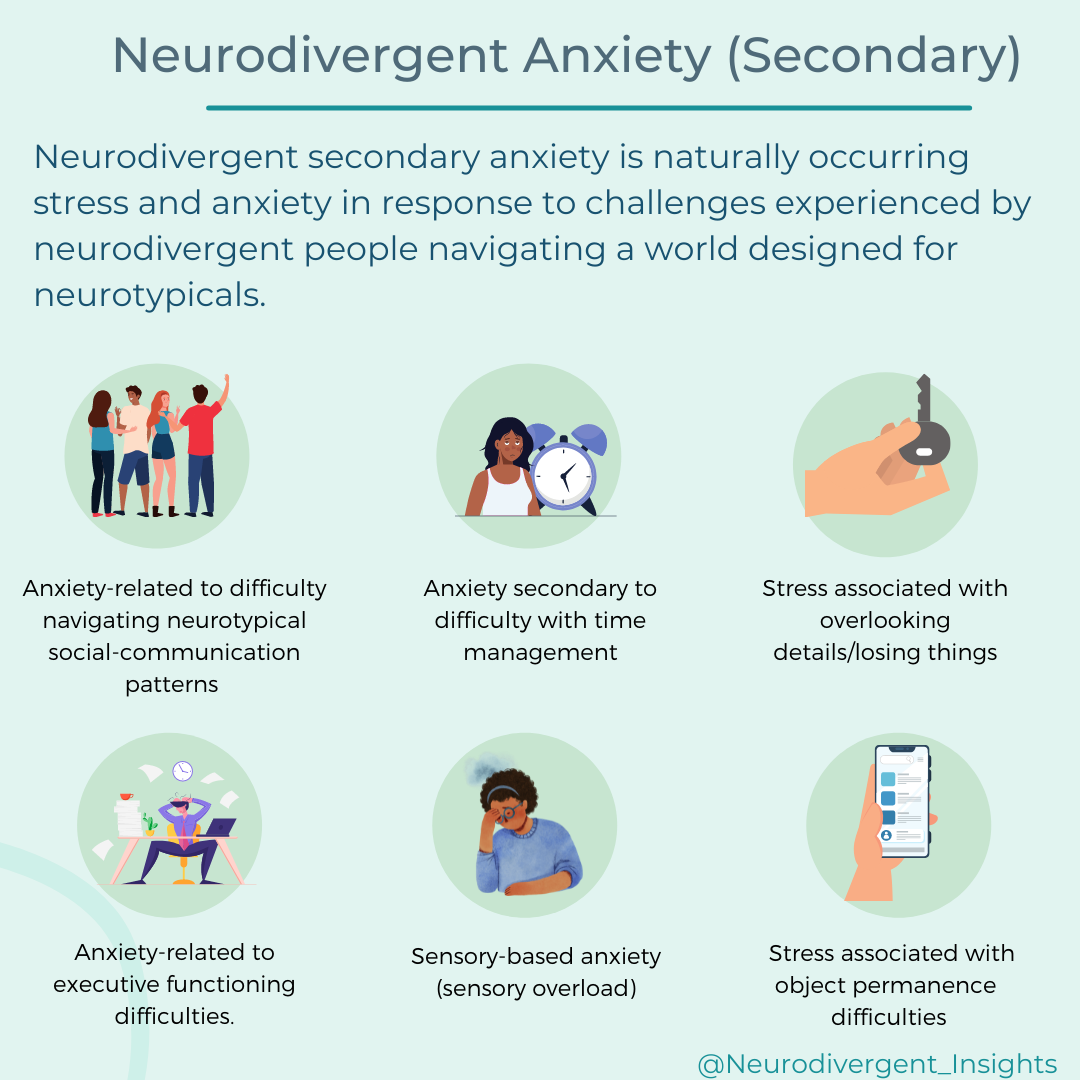

Executive Supports and coaching are among the best ways to reduce anxiety and stress associated with executive functioning stress.
Coaching ADHD or executive functioning coaching can be useful for learning strategies. A coach can help you get organized, stay on task, encourage you or remind you to get back to work. A coach can be tremendously helpful in supporting attention and concentration difficulties.
Outsource your Executive Functioning: The more you can outsource your executive functioning, the less your brain has to keep in mind. Executive outsourcing involves developing external structures that hold things in mind for you. This can look like having a solid calendar system, post-its, a notebook you write things down in, setting up alarms on your phone, and so forth. It can be tedious to set up but save you buckets of energy and stress in the long-term (consider working with a coach to help set this up). Some frequent ways to outsource executive functioning:
Make frequent use of:
- Whiteboards and color post-its
- Color-coding
- Lists
- Phone alerts/reminders (via calendar function)
- Notes to self (shower notes are especially a lifesaver)
- Rituals
- Automation
To check out some of my favorite executive functioning aids, go here.
Neurodivergent affirming therapist: It can be hard to find us, but we’re growing by the numbers. To find a ND-affirming therapist, check out some of the directories I have up on my resource page.
Attend to your sensory needs and spend time unmasking: Disowning our sensory needs and communicating in ways that feel unnatural to us can be significant stressors. To read more about my experience of unmasking and to attend to my sensory needs, you can read my blog post on it.





